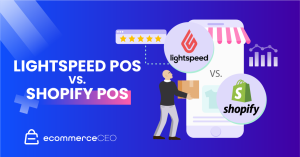This model allows developers and designers to tweak or overhaul each segment without interfering with the other — allowing for greater flexibility and more consistency across all the platforms on which you may sell your products.
Why Is Headless Commerce Becoming So Popular?
Until recently, headless commerce was only available to large companies of scale, who had the resources to develop these systems in-house — along with the APIs that enable their cross-functionality.
Now, an increasing number of software-as-a-service (SaaS) providers are getting into the business of providing ready-made services for any brands looking to adopt a similar strategy.
In fact, over $1.6 billion in funding was raised for headless technologies from 2019 to 2021, according to Forbes.
Along with the increased accessibility of these services, new trends in online customer behavior — accelerated by the pandemic — saw a number of brands try their hand at quickly adapting to a direct-to-customer (DTC) model.
In other words, as more and more customers took their shopping online, the more businesses — especially those with a large line of products and various touch points — came to rely on creative, consistent omnichannel experiences.
A headless approach to ecommerce is the perfect foundation when pursuing these kinds of strategies.
What Are Some Benefits of Headless Commerce?
Let’s take a look at some of the benefits.
Faster Time to Market
Many roadblocks to market can be quickly eliminated with the help of headless commerce.
For example, while traditional models forced developers to make any changes on both their front- and back-end systems, a headless strategy allows that work to be done independently of each system.
This can lead to a massive reduction in the time it takes to make and publish changes on the front end.
Streamlined Integration
If your existing systems are coded in multiple programming languages, a headless approach will allow you to integrate them under one back-end umbrella, thanks to the use of universal APIs.
This allows you to adapt to new changes at your own speed while staying agile for any technological changes coming down the road.
Better Omnichannel Management
The customer journey is leading more shoppers online than ever, along with an increasingly complex set of touch points.
A headless commerce model not only helps keep your product content consistent — but can conceivably turn any touch point into a sales opportunity.
Improved Personalization
In addition to maintaining a consistent omnichannel experience in a general sense, a headless model will allow for a great deal of personalization throughout your touch points — a feature that leads to greater customer trust, brand loyalty, and sales.
With the right APIs in place, a headless architecture empowers you to quickly and easily build custom experiences across channels.
How Can a Brand Get Started?
First things first: Determine whether a headless commerce platform is right for your company. The change can be a welcome boon for businesses who:
- Have a large volume of content that’s difficult to manage across multiple touch points;
- Are known for promising and delivering on high-end brand experiences; and
- Have an ecommerce site that struggles with a high volume of traffic, especially mobile traffic.
Smaller companies might not see the cost-benefit of such a change until they reach a certain point of scale in sales and traffic.
Some of these changes can be implemented in phases, which might be a better fit for a more up-and-coming brand.
If your brand does seem like a good candidate for headless commerce, you’ll then need to determine your next step: Do you simply tweak your existing architecture, or tear it all down to start from scratch?
There are a number of SaaS platforms (i.e., Magento 2, Shopify) that can help get you started on your journey to headlessness.
Headless commerce might not be for everyone, but it’s certainly worth exploring — especially if you’re a business looking to expand your DTC channels.
For more insights on how to provide an optimal ecommerce experience and reach your digital shelf goals, check out our “Essential Ecommerce KPIs for the Digital Shelf” guide.



